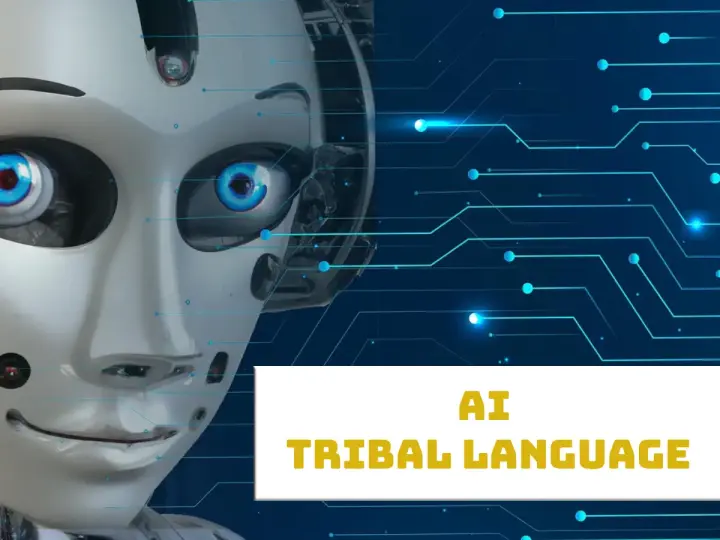
Language is more than a tool for communication—it is the very essence of culture, tradition, and identity. Across the world, many tribal and indigenous languages are at risk of disappearing due to modernization, urban migration, and the lack of digital documentation. Losing these languages is not just a loss of words—it is the erosion of centuries of knowledge, oral history, folklore, and community identity.
Artificial Intelligence (AI) is emerging as a powerful ally in the preservation and revitalization of these endangered languages. By leveraging AI technologies, tribal communities can digitize, archive, and use their native languages in education, governance, healthcare, and everyday communication. In 2025, India is at the forefront of this movement, combining its technological prowess with social responsibility to promote tribal language inclusion.
Globally, UNESCO estimates that nearly 40% of the world’s languages are endangered, with tribal and indigenous dialects being particularly vulnerable. In India alone, over 700 tribal languages and dialects exist, many of which have limited written records or digital presence.
The loss of a language is more than a linguistic issue—it impacts:
Cultural Heritage: Folktales, songs, rituals, and oral histories are tied to language. Losing the language erases centuries of cultural knowledge.
Education: Tribal students often struggle in schools that use mainstream languages, creating barriers to learning.
Healthcare Access: Health campaigns and telemedicine programs become less effective if information isn’t available in local languages.
Governance: Citizens cannot fully engage in digital governance if platforms are not available in their mother tongue.
By digitally including tribal languages, societies ensure that communities can participate equally in modern economic, educational, and social systems. Language preservation is thus deeply intertwined with digital equality and social inclusion.
AI offers unprecedented tools to analyze, translate, and preserve tribal languages, making them accessible for future generations. The main technological interventions include:
1. Speech Recognition and Translation
AI-powered speech recognition systems can convert tribal languages into widely spoken languages and vice versa. This enables:
Voice assistants and chatbots that communicate in indigenous dialects.
Real-time translation for educational apps, healthcare consultations, and government portals.
Easier interaction between tribal communities and modern digital infrastructure.
For example, AI assistants could allow a tribal farmer to receive weather updates, market prices, or government notifications in their native dialect, improving decision-making and productivity.
2. Natural Language Processing (NLP)
NLP models analyze grammar, vocabulary, and sentence structures of lesser-known languages. With this:
AI can create digital dictionaries and language corpora.
Educational materials in tribal languages can be generated.
Mobile apps for learning and communication can be developed.
NLP ensures that tribal languages can be digitally structured and standardized, creating a foundation for AI-driven applications.
3. Text-to-Speech (TTS) & Speech-to-Text (STT) Tools
AI-based TTS and STT tools allow users to speak and type in their native dialects. These tools enable:
Students to learn in their mother tongue.
Healthcare workers to record and share information in local languages.
E-governance platforms to offer voice-based access to government services.
4. Data Preservation and Archiving
AI can store and archive audio recordings, texts, and oral stories, ensuring that native speakers’ voices are captured for posterity. This digital preservation helps:
Linguists study endangered languages.
Future generations learn their ancestral languages.
Cultural organizations promote tribal literature and traditions.
India, with its vast linguistic diversity, is taking active steps toward AI-enabled tribal language inclusion. Key initiatives include:
AI Translation Apps for Tribal Education: Schools and NGOs are piloting apps that allow tribal students to learn core subjects in their mother tongue.
Digital India Mission: The government promotes inclusion of linguistic diversity in digital platforms, ensuring that e-governance tools are accessible to tribal communities.
Academic and Industry Collaboration: Institutions like IIT Delhi, IIIT Hyderabad, and BITS Pilani are partnering with AI companies to develop datasets and models for tribal languages.
Community Engagement: Tribal communities are being trained to contribute to AI datasets, ensuring authenticity and cultural context in translations.
These efforts aim to bridge the digital divide, making tribal languages an integral part of India’s technological and educational landscape.
India is not alone in this effort. Around the world, AI is being used to preserve and revitalize indigenous languages:
Google AI and Microsoft: Both tech giants have launched initiatives to support endangered languages through machine translation, speech recognition, and AI-driven educational tools.
Canada and Australia: Indigenous communities are using AI to document oral traditions, produce digital dictionaries, and create learning resources for younger generations.
Africa: AI models are being trained on local dialects to improve literacy, education, and digital participation.
These examples show that AI can scale language preservation globally, ensuring that cultural diversity is maintained in the digital era.
Integrating AI in tribal language preservation offers multiple benefits:
Preserves Cultural Heritage: Oral histories, songs, and traditions are digitally archived for future generations.
Improves Access to Education and Healthcare: Children and adults can learn and access services in their native language.
Promotes Digital Literacy: Tribal communities gain confidence in using modern digital tools.
Strengthens Social and Economic Inclusion: Language inclusion ensures participation in governance, commerce, and societal development.
Empowers Youth and Entrepreneurs: Young people can create apps, content, and startups in tribal languages.
Despite its potential, AI for tribal languages faces challenges:
Limited Datasets: Many tribal languages have few written or digital records, making AI training difficult.
Diverse Dialects: Even within a single tribal language, multiple dialects may exist, requiring nuanced AI models.
Infrastructure Barriers: Internet connectivity and access to smartphones are limited in remote tribal areas.
Funding and Collaboration: Sustained investment and partnerships are needed for long-term impact.
Addressing these challenges requires cooperation between government, industry, academia, and tribal communities.
Looking ahead, AI has the potential to transform tribal language preservation and inclusion in India and globally:
Expansion of Language Coverage: More tribal and indigenous languages can be included in AI-powered platforms.
Integration with Education Systems: AI can power e-learning in native dialects, improving literacy and learning outcomes.
Voice-Enabled Government Services: Tribal communities could access public services through voice commands in their mother tongue.
Cultural Content Creation: Digital storytelling, online libraries, and cultural preservation apps can flourish.
Global Collaboration: India could emerge as a leader in AI-based tribal language preservation, sharing expertise with other nations.
By 2030, AI could bridge the gap between tradition and technology, ensuring that no language, no matter how small, is left behind in the digital revolution.
AI for tribal language inclusion is more than just a technological advancement—it is a movement for cultural preservation, digital equity, and social empowerment. By digitizing and integrating tribal languages into mainstream technology, India is setting an example for the world in inclusive innovation.
With ongoing collaborations, advanced AI tools, and government support, the voices of tribal communities will not only be heard—they will thrive in the digital era. For educators, policymakers, tech innovators, and tribal communities, AI presents a transformative opportunity to bridge the digital divide while safeguarding India’s rich cultural tapestry.




